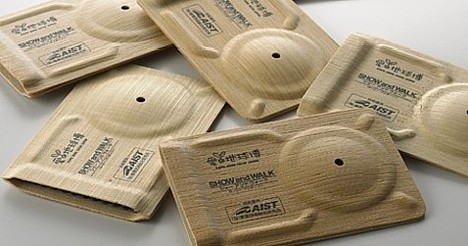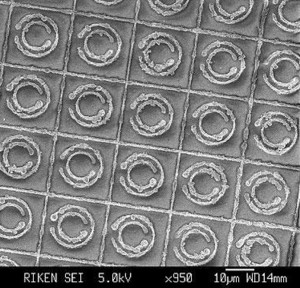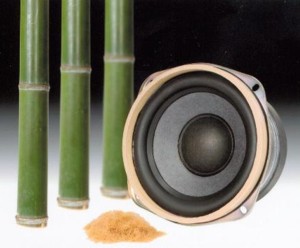 Sumitomo Osaka Cement and YRP Ubiquitous Networking Laboratory have developed cyber-concrete, a smart form of concrete embedded with RFID tags that can store data. Researchers developed a durable coating for YRP's "ucode" tags, which have a larger storage capacity than ordinary IC tags, and they developed a special reader that, when held near the concrete, retrieves the stored data and converts it into spoken form.
Sumitomo Osaka Cement and YRP Ubiquitous Networking Laboratory have developed cyber-concrete, a smart form of concrete embedded with RFID tags that can store data. Researchers developed a durable coating for YRP's "ucode" tags, which have a larger storage capacity than ordinary IC tags, and they developed a special reader that, when held near the concrete, retrieves the stored data and converts it into spoken form.
Sumitomo is set to begin field testing the technology at its cement factories this month, with the aim of making it available to large construction companies in the spring of 2007.
While the potential applications of cyber-concrete are endless, the companies are initially promoting it as a new tool for managing structural safety data. Cyber-concrete can store information about itself, such as when, where and how it was manufactured and data about strength and quality, making for more efficient and reliable safety inspection systems. This traceability data can be used by construction companies, inspectors, or tenants concerned about building safety.
Public concern for structural safety has risen with a recent building safety inspection scandal involving the discovery of falsified quake-resistance data for a number of buildings in Tokyo and the surrounding areas. Perhaps cyber-concrete will bring a little peace of mind, allowing people to bypass the shady inspectors and ask buildings directly how safe they are -- which is great as long as buildings have no reason to be dishonest.
And should you find yourself trapped under three floors of cyber-concrete after the Big One, at least you'll have something to talk to while waiting for the rescue bots to arrive.
[Sources: Fuji Sankei, Nikkei Net]




 On May 8, researchers from
On May 8, researchers from  When light passes through material such as glass, a portion of its energy is lost as it reflects off the material's surface. Researchers at Japan's Institute of Physical and Chemical Research (
When light passes through material such as glass, a portion of its energy is lost as it reflects off the material's surface. Researchers at Japan's Institute of Physical and Chemical Research (
 NTT Docomo's new FOMA N701i ECO, the world's first cellphone to incorporate parts made from plant-based plastic, is scheduled for release this spring.
NTT Docomo's new FOMA N701i ECO, the world's first cellphone to incorporate parts made from plant-based plastic, is scheduled for release this spring.